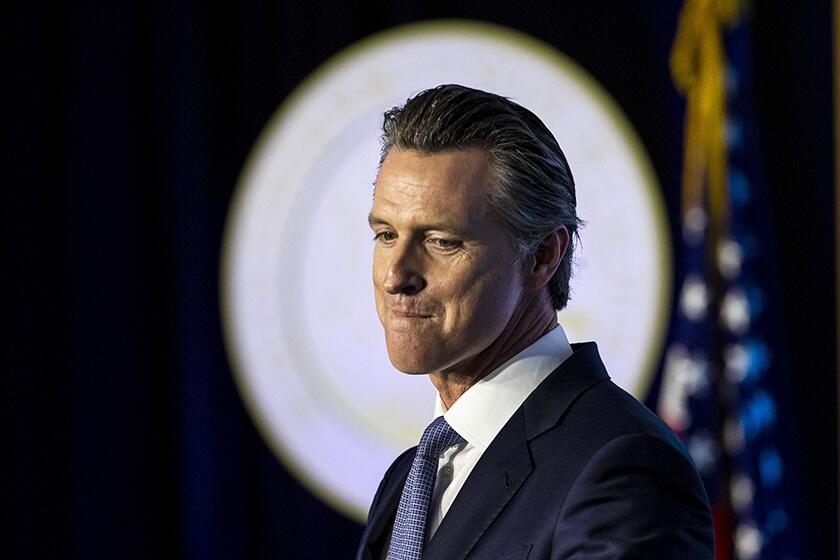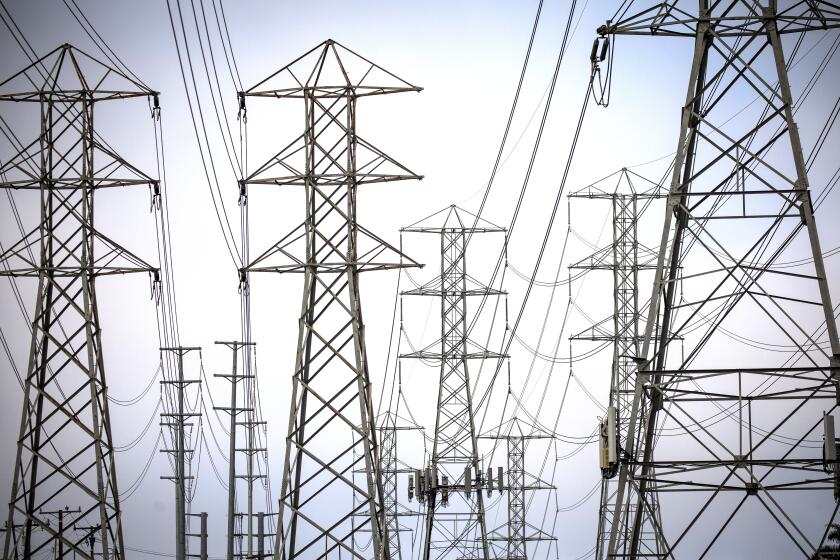Opinion: California’s electric bills are a problem. But cutting school funds isn’t the solution

Two weeks ago, I dropped my 3-year-olds off at school for the first time. It was a happy day — until I learned that the California state Assembly was planning to gut a crucial program designed to keep kids like mine safe in the classroom.
CalSHAPE, or the California Schools Healthy Air, Plumbing, and Efficiency Program, helps schools improve air quality and cooling. Many of these systems are dangerously outdated or even missing entirely in schools across the state. Upgrades help protect our kids from extreme heat, indoor air pollution, wildfire smoke and viruses such as COVID. But despite the worsening effects of climate change, the Assembly has come up with a plan that would eliminate the little funding we have to make schools safer — under the pretense of lowering Californians’ utility bills.
Opponents of Assembly Bill 3121, including the Natural Resources Defense Council, say it would, on average, give electric customers a one-time credit of just over $20 on a single bill. That can’t be worth sacrificing students’ health.
So why is this plan even on the table? Some legislators claim it addresses high electricity prices. But this is a cheap political gimmick, not a solution.
Newsom energy package sparks tug of war in final hours of California legislative session.
Assemblywoman Cottie Petrie-Norris (D-Irvine), who sponsored the bill, appears to have bought into utilities’ false claims that small programs such as CalSHAPE are driving rising electricity costs. This is a distraction, aimed at turning lawmakers’ attention away from real problems, such as excess utility profits.
In 2023, PG&E raked in $2.2 billion in profits, a 25% increase from 2022. In the second quarter of 2024, profits were 28% higher than a year earlier. The company has also announced plans to spend $900 million to buy the headquarters it moved to after finalizing its bankruptcy reorganization. Last year, San Diego Gas & Electric brought in almost $1 billion in profits. And Edison International — the parent company of Southern California Edison — reported $1.2 billion in net income in 2023, nearly double the previous year. All while Californians are struggling to pay their electricity bills.
Last year’s utility profits were almost 20 times more than the funds remaining in CalSHAPE. Yet the Assembly wants to cut this healthy schools program to offer almost imperceptibly low one-time bill credits rather than exploring other ideas such as using lower-cost financing to cut utility profits on infrastructure investments — a proposal that was abandoned after utility company opposition.
CalSHAPE isn’t costing anyone money now — its funds were collected from past utility bills. California schools have already submitted applications for most of the $250 million left in the program. Legislators should let schools have the money that was meant for them, rather than clawing it back at the last minute.
Santa Barbara Unified School District, where my kids will start kindergarten in a few years, was expecting $6 million in crucial upgrades through CalSHAPE. And Tustin Unified, which is represented by Petrie-Norris, would lose more than $4 million in potential school funding if this plan passes.
Some think schools that have already applied will still get the funding if this bill becomes law, but the language is not clear. And if applicants get the dollars they deserve, it makes eliminating the program even more of a gimmick, resulting, by my best guess, in about $3 back per ratepayer.
Some Southern California consumers say they’re frustrated with their costly electricity bills. Here’s what to do about it.
This version of the bill — introduced after 10 p.m. Wednesday night, when many Californians were asleep — also cuts funding for solar on affordable housing and clean energy generation and storage. The legislators may well have introduced their plan at the last minute because they know it’s wildly unpopular. A broad coalition with several labor unions, including the United Steelworkers District 12 and California Federation of Labor Unions, AFL-CIO, submitted a letter earlier this month opposing the idea. Improving our school buildings not only benefits student health; it also creates good-paying jobs for Californians.
CalSHAPE also protects our teachers from pollution, which is why the California Federation of Teachers, California Teachers Assn., California School Employees Assn. and Service Employees International Union have all opposed this proposal. School employees shouldn’t have to breathe unhealthy air in the workplace.
Make no mistake, California is facing a utility affordability crisis. Rates have risen far too quickly in recent years. But to lower bills, policymakers must address the actual drivers of increased costs, rather than launching a raid on school funding or diminishing programs that bring rooftop solar to communities that have been left behind.
The rates crisis in California can’t be solved with a political stunt. It will require innovative solutions and better regulation of monopoly utilities. What the legislature is proposing is like putting a Band-Aid on a wound that needs stitches. And our students and teachers will be the ones who suffer. When the Assembly and Senate gather on Saturday, legislators should stand by California’s kids and vote down AB 3121.
Leah C. Stokes is an associate professor at UC Santa Barbara, a senior policy counsel at Rewiring America and host of the podcast “A Matter of Degrees.” @leahstokes
More to Read
A cure for the common opinion
Get thought-provoking perspectives with our weekly newsletter.
You may occasionally receive promotional content from the Los Angeles Times.











